Government Affairs Committee Chair News—An Update to Our Subcommittee Structure
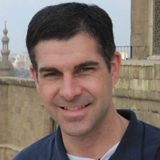 Kevin Whittlesey
Kevin Whittlesey
Chair, Government Affairs Committee
The intersection of science and policy is a dynamic and rapidly changing landscape. Policies change. Funding priorities shift. New programs are created while others are phased out. GAC regularly responds to these situations by adjusting our advocacy agenda. However, GAC is supporting a growing list of activities and continues to be engaged by new government officials and stakeholders who seek a stronger relationship with MRS. Adjusting to be able to take advantage of the increasing opportunities for GAC will require engaging more volunteers.
At the 2016 MRS Spring Meeting, the board approved an update to the GAC’s subcommittee structure that will enable us to utilize additional volunteers to increase our bandwidth. As such, the Congressional Fellow Subcommittee is now included within a new subcommittee known as the Advocacy Education and Outreach (AEO) Subcommittee. The new AEO Subcommittee will include all activities previously performed by the Congressional Fellow Subcommittee, but has a broader scope. The expanded scope of the AEO Subcommittee will include organizing policy events, developing advocacy educational materials, and developing and executing outreach efforts to the MRS community regarding GAC activities and relevant policy issues. This new subcommittee will work closely with the other subcommittees to leverage and add value to the existing GAC activities. Importantly, the current concept allows for both standing and ad hoc activities, enabling the GAC to utilize volunteers as both committee members as well as ad hoc for specific projects and activities. This approach will enable GAC to engage a large number of MRS members interested in participating in GAC activities at different commitment levels.
This update to the organizational structure of GAC represents an exciting opportunity. Clearly the hard work and dedication of all of our past and present volunteers is paying dividends, evidenced by increasing opportunities for GAC participation and involvement. We need to be able to take advantage of new opportunities to represent the MRS membership within the government affairs and advocacy arena. The new AEO Subcommittee will help us do so. Please contact me if you want to get involved with this or other GAC subcommittees!
What's Happening in Washington
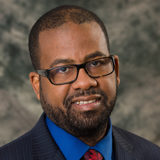 Damon Dozier
Damon Dozier
MRS Director of Government Affairs
As reported in the last issue of INTERSECTIONS, Congress and the Administration reached a budget deal last winter that set up spending limits for both last year and the current year's budget cycle. Despite that agreement on top-level numbers, thus far this year neither the House nor the Senate have been able to agree on passage of a budget resolution that would set out more specific spending guidelines. Even without the passage of a formal budget resolution, however, the Appropriations Committees in both bodies have been actively working on spending bills.
In the Senate, for example, bills that have passed though the Appropriations Committee include Commerce, Justice and Science (which includes funding for the National Science Foundation, NASA and the Department of Commerce—National Institute of Standards and Technology), Energy and Water (which includes funding for the Department of Energy and NNSA), Transportation, HUD and Military Construction, Veterans.
As far as the Senate Commerce, Justice and Science (CJS) bill is concerned, NSF would be essentially flat-funded from FY 2016 levels, compared to a 1.3 percent increase sought by the White House in the President's Budget Request released this past February. The major R&D agencies within Commerce—the National Institute of Standards and Technology (NIST) and the National Oceanic and Atmospheric Administration (NOAA)—would both see very modest increases in overall budgets.
The President's budget request for the Department of Energy (DOE) had sought major funding increases for renewable energy and energy efficiency technology, energy storage R&D, and the Advanced Research Projects Agency—Energy (ARPA-E), along with a smaller increase ($50 million) for basic research funding at the Office of Science. Senate appropriators only added a small 1.0 percent discretionary funding increase for the Office of Science, and a small increase for ARPA-E.
As far as the House is concerned, the lack of a budget resolution means that the full House will not be able to vote on appropriations bills until May 15. Despite this limitation, the Energy and Water appropriations bill has been approved by the full Appropriations Committee, with two other bills (Military Construction and Agriculture) gaining approval as well. House appropriators only set aside a small increase for the Department of Science, but would reserve an almost five percent increase for ARPA-E.
On the authorization side of the ledger, the House Armed Services Committee recently passed the Fiscal Year (FY) 2017 National Defense Authorization Act (NDAA). While the Chairman's mark increases DoD S&T relative to the President's budget request, the funding levels do not yet meet the FY 2016 enacted levels, and the vast majority of the basic research accounts remain reduced compared to FY 2016.
MRS, as a member of the Coalition for National Security Research, supports a FY 2017 request of $13.4 billion for S&T and $2.5 billion for 6.1 basic research, but the Chairman's mark reduces 6.1 basic research below FY 2016 NDAA levels and 7.7 percent below FY 2016 enacted levels. These cuts would disproportionally impact the Army Research Office, Office of Naval Research, and Air Force Office of Scientific Research.
Also looking at authorization bills, recently the Senate Committee on Commerce, Science, and Transportation, convened a hearing entitled "Leveraging the U.S. Science and Technology Enterprise." The hearing was designed to inform the efforts of the Commerce Committee's bipartisan Innovation and Competitiveness Working Group, led by Sens. Cory Gardner (R-Colo.) and Gary Peters (D-Mich.). As a reminder, this working group is the same body that has been preparing legislation that would update science and technology policy in the NSF and the DOE last authorized by the America COMPETES Act.
While a bill being introduced in the Senate and being passed by the full body remains uncertain, a draft may be produced in the coming months. Issues addressed during the hearing included concerns about the so-called "valley of death"—bridging the gap between initial investment in research and moving to commercialization—and the importance of STEM education and how to provide a talented workforce for private companies like Microsoft. It was noted that there is a huge demand for people with computer science expertise, but very little supply—only 50K computer science graduates per year. Also mentioned were concerns about many provisions about the COMPETES bill on the House side, especially separate funding levels for NSF directorates.
In terms of activities in the international space, MRS staff is working on a plan to set up informal informational meetings with foreign consulates located in Boston to gain additional information about collaboration and networking opportunities offered by different countries. As a reminder, MRS staff in the past has set up meetings with the German embassy in DC and the State Department.
Finally, we are indeed in election season, and MRS is investigating the possibility of convening a blue ribbon panel to make recommendations to the incoming Administration about filling key slots for materials scientists in federal agencies and other posts of importance. Al Hurd will be leading the effort, and plans are in place to move forward in the coming weeks.
Materials Voice Letter Campaign Impacts Congress
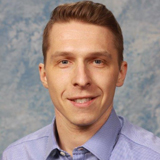 Brent Carey
Brent Carey
Chair, Grassroots Subcommittee
Just a quick update on MRS grassroots advocacy activity as we settle into spring! Our membership sent a total of 1522 letters to their elected representatives at the 2016 MRS Spring Meeting in Phoenix on two important issues pertaining to current issues in science and technology policy. One letter focused on protecting basic research funding at the Department of Defense (DoD), which is facing an overall 9% cut in FY 2017. Such a substantial decrease in funding levels has substantial implications for DoD R&D programs as well as external funding opportunities. On a more optimistic note, our second letter promotes the Smart Manufacturing Leadership Act (S. 1054), which is poised to facilitate innovation, increase energy savings, and improve the global competitiveness of domestic manufacturing through the promotion of “smart” manufacturing technologies. Many thanks to those of you who took the time to send these letters, and to the volunteers that helped draft the text and staff the kiosk at the Meeting!
MRS Congressional Science & Engineering Fellowship Corner
 Kevin Whittlesey, for Gavi Begtrup
Kevin Whittlesey, for Gavi Begtrup
Chair, Congressional Fellow Subcommittee
The MRS Congressional Science and Engineering Fellowship program continues to be successful. The program is a wonderful investment by MRS and a signature effort of the GAC. This spring the Congressional Fellow Subcommittee completed the selection process for the 2016-2017 MRS/OSA and MRS/TMS Congressional Science and Engineering Fellows from another highly competitive applicant pool. Stay tuned for a separate announcement about our new incoming Fellows, who will enter the program at the end of August starting with our traditional welcome breakfast with former MRS Congressional Fellows and a few members of the GAC.
As has become customary, the GAC sponsored an information session at the spring meeting in Phoenix to provide information to potential applicants about the program. GAC member Ashley White (2010-2011 MRS/OSA Congressional Fellow) presented an overview of the program, after which I joined her for a question and answer session. We have been able to support these information sessions at each spring and fall meeting consistently for a number of years. Those sessions have been very helpful at drawing high quality applicants. Please direct any potential applicants, at all career stages, to these information sessions.
Our current 2015-2016 Fellows, Peter Winter and Jeremy Ward, are into the final quarter of their fellowship years which are being conducted in the offices of Senators Chris Coons and Dick Durbin, respectively. Stay tuned for information regarding each of their next steps upon completion of the fellowship program. We will look forward to their future involvement with GAC!
Spring Congressional Visits Day, Broader Impact
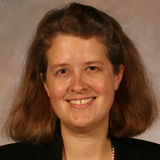 Linda J. Olafsen
Linda J. Olafsen
Chair, Congressional Visits Day Subcommittee
The Congressional Visits Day Sub-committee organized a Washington, DC visit on April 26-27, 2016. Twenty participants organized into six teams visited House and Senate offices. The 17 states represented included Arkansas, Colorado, Florida, Illinois, Kentucky, Massachusetts, Michigan, Minnesota, Missouri, Nebraska, Nevada, New Mexico, Pennsylvania, South Carolina, South Dakota, Texas, and Washington.
Fifteen of the offices visited were new contacts for MRS, and many of the meetings were with the staff of members of Congress who serve on the science or appropriations committees that oversee the National Science Foundation, National Institute of Standards and Technology, the Department of Defense, and the Department of Energy or who are members of House or Senate leadership. Some of these offices included those of Senator Harry Reid, Senator Roy Blunt, Senator John Thune, Senator Mitch McConnell, Senator Dick Durbin, and Senator Patty Murray. There also were visits to the offices of Senators Cory Gardner and Gary Peters who have been working on a bipartisan version of COMPETES reauthorization in the Senate.
While most meetings are with staff, participants had the privilege of meeting with several members, including Senator Roy Blunt, Senator John Boozman, Senator Patty Murray, Representative Bill Flores, Representative Tim Murphy, and Representative Dina Titus. Participants attended "Constituent Coffee" with the Nebraska delegation and the South Dakota delegation. Senators Blunt and Murray hosted coffee that morning as well. Most discussions centered on appropriations of research funding, and members showed great interest in success stories, particularly ones that create jobs and stimulate local economies.
2016 MRS Spring Meeting: A Dialogue with Federal Funding Agencies and Their Support for Materials Research
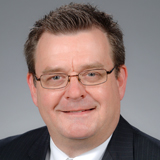 David P. Norton
David P. Norton
Chair, Government Agency Subcommittee
This was our first MRS Meeting in Phoenix, Arizona, and the logistics and attendance of the Government Agency Forum could not have been better. Six invited speakers from various government agencies presented on research programs that are significantly important to the materials research community. Presentations were made the evenings of Tuesday and Thursday so as to be accessible to MRS attendees who would otherwise be attending the daytime scheduled technical sessions. The Government Agency Forum presentations were very well attended with some session attendance at or near 100.
On Tuesday, Harriet Kung, Director of Basic Energy Sciences (BES) in the Office of Science, described the various fundamental research programs that support the DOE’s missions in energy, environment, and national security. Basic Energy Science is the largest supporter of fundamental research in the US. Kung described the three modalities within BES to support materials research. These are Core Research, which provides funding for individual investigators and small groups, Energy Frontiers Research Centers, and Energy Innovation Hubs. Kung reiterated that programs within BES support hypothesis-driven fundamental science with energy relevance, discovery science, and use-inspired basic research. Kung encouraged researchers to utilize the various BES workshop reports in order to better understand the interests and directions for future BES supported activities.
Linda Sapochak, Acting Director of the Division of Materials Research (DMR) within the National Science Foundation, provided an overview of the programs and opportunities within her Division. She described how the NSF, and DMR in particular, partners with the research community to invest public funds into science and engineering. The Division of Materials Research is the largest division in NSF with funding of approximately $310M. Funding opportunities highlighted in her presentation included the Early-Concept Grants for Exploratory Research (EAGER), an opportunity for modest support of ideas that are high risk but with high impact if successful. She noted that DMR would be participating in Innovations at the Nexus of Food, Energy, and Water (INFEWS), a program aimed at integrated interdisciplinary research efforts to transform scientific understanding of the food-energy-water nexus in order to improve system function and management, address system stress, increase resilience, and ensure sustainability. Finally, she noted the availability of supplemental funding for Career Life Balance, for Veteran researchers, and for international collaborations.
A presentation on the DOE applied programs within Energy Efficiency and Renewable Energy (EERE) was given jointly by Victor Kane, Director of the National Lab Impact Initiative in EERE, and Harriet Kung from BES. They described the Advanced Manufacturing Office (AMO), which partners with industry, small business, universities and other stakeholders to identify and invest in emerging technologies with the potential to create high-quality U.S. manufacturing jobs, enhance global competitiveness and reduce energy use by encouraging a culture of continuous improvement in corporate energy management.
On Thursday, Pani Varanashi, Program Manager, Physical Properties of Materials, Army Research Office (ARO) reported on the Materials Science Division of the ARO and programs aimed at realizing unprecedented material properties by embracing long-term, high-risk, high-payoff opportunities for the U.S. Army. Special emphasis is given to materials by design, mechanical behavior of materials, physical properties of materials, and synthesis and processing. The Division is currently seeking to establish several new thrusts, including 2D (organic, inorganic) materials that are heterostructures and/or hybrids, spin caloritronics, transformative processing strategies, mechano-chemically adaptive materials, and directed self-assembly of reconfigurable materials.
Eric Lin, Chief of the Materials Science & Engineering Division at NIST, presented an overview of ongoing programs and priorities in materials science along with opportunities to engage with NIST. In partnership with members of industry, other government agencies, and academia, NIST develops the measurement science, standards, technology, and data required to support the nation's need to design, develop, manufacture, and use materials. The goal is to enable those engaged in the materials science and engineering enterprise to adopt new materials and incorporate them into improved, successful products that solve problems in areas such as energy, electronics, transportation and the environment—and ultimately contribute to a better quality of life for Americans.
John Main, Program Manager for the Defense Science Office (DSO) within DARPA described DSO’s interest in high-risk, high-payoff fundamental research initiatives across a broad spectrum of science and engineering disciplines, initiatives with the potential to reshape existing fields or create entirely new disciplines. He also described the need to transforms these initiatives into radically new, game-changing technologies for U.S. national security.
A Value-Added Materials Research Story
A Diamond is Forever—Redefining Optical Imaging and Diagnostics
 Roger York
Roger York
Instrumentation Engineer, Bikanta, Inc.
The story of Bikanta—a Berkeley, California-based startup developing nanodiamond technologies for medical imaging, and in particular for cancer diagnosis and staging—is intricately tied to the United States federal government and the support they provide to fundamental, translational and applied scientific research. The story of Bikanta begins in Bethesda, Maryland, at the National Heart, Lung, and Blood Institute at the National Institutes of Health (NIH). There, while researchers in the laboratory of Keir C. Neuman were studying a particular biophysical problem, they recognized that the technology they were developing—nanodiamond imaging probes—had special properties that could be exploited to aid in visible-light imaging of tissues, which could be useful in cancer screening and staging. 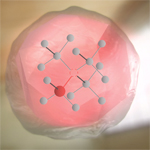 Current cancer screening is unable to effectively detect small breakaway tumors. The inadequacy to detect diseases such as this at the molecular level and the need to better study fundamental biological pathways has led to a $4 billion market for optical imaging probes (OIP). Significant technical limitations involving signal loss, high background interference and unacceptable toxicity have limited academic endeavors with conventional OIP dyes and quantum dots. Nanodiamonds are brightly fluorescent, stable, and non-toxic, solving the problems with current OIPs. Two key scientific publications were published in 2013-14, and these two papers formed the basis of the intellectual property that would form the foundation of Bikanta. The NIH was very supportive of moving this platform technology forward. To translate the technology from the bench to the bedside (with an aim to focus on (1) specialized coatings to improve the stability and biocompatibility of nanodiamonds, in addition to (2) developing equipment and techniques to obtain background-free images of these nanodiamonds in tissue), Bikanta was formed by Dr. Ambika Bumb, a postdoc who led the research at the NIH and has now moved into the role of CEO.
Current cancer screening is unable to effectively detect small breakaway tumors. The inadequacy to detect diseases such as this at the molecular level and the need to better study fundamental biological pathways has led to a $4 billion market for optical imaging probes (OIP). Significant technical limitations involving signal loss, high background interference and unacceptable toxicity have limited academic endeavors with conventional OIP dyes and quantum dots. Nanodiamonds are brightly fluorescent, stable, and non-toxic, solving the problems with current OIPs. Two key scientific publications were published in 2013-14, and these two papers formed the basis of the intellectual property that would form the foundation of Bikanta. The NIH was very supportive of moving this platform technology forward. To translate the technology from the bench to the bedside (with an aim to focus on (1) specialized coatings to improve the stability and biocompatibility of nanodiamonds, in addition to (2) developing equipment and techniques to obtain background-free images of these nanodiamonds in tissue), Bikanta was formed by Dr. Ambika Bumb, a postdoc who led the research at the NIH and has now moved into the role of CEO.
Upon formation of the company, Bikanta faced a challenge that many—if not all-biotech startups have to deal with: the large amount of capital needed to do R&D and eventually launch products into the market. Fortunately, Bikanta was quite successful in raising a large seed round and then the next task became how to effectively use those funds to further the company along towards its goals. So Bikanta turned to the Molecular Foundry at Lawrence Berkeley National Laboratories, a user facility supported by the Department of Energy. The Molecular Foundry provides two key pieces for Bikanta; (1) the infrastructure to perform synthesis and characterization of functionalized nanodiamonds, and, (2) interaction with the talented scientific team the Molecular Foundry has assembled to use and maintain such an infrastructure. Additionally, Bikanta is a member of the Bionanotechnology Center (BNC), which is a core facility of the California Institute for Quantitative Biology (QB3), an institute established by the University of California for fundamental, translational, and applied research in the biological sciences.
Nanodiamonds have unique optical, chemical, and magnetic properties that have been used by a variety of companies, both large and small, for a variety of applications. The use of fluorescent nanodiamonds for in-vivo imaging is a relatively new idea. Fluorescent nanodiamonds (FNDs) are biocompatible particles with indefinite photo-stability that have emerged as promising bioimaging probes. FNDs with negatively charged nitrogen-vacancy (NV - ) centers are superior imaging probes because they do not photobleach or blink, have long fluorescence lifetimes, and have other advantages. Their fluorescence emission can probe deep into tissue with limited background signal from autofluorescence. However, nanodiamonds are prone to aggregation in biological fluids, which causes a number of problems. To alleviate these problems, Bikanta applies special surface coatings to the nanodiamonds, which allow them to stay separate from one another in water. The optical properties of these nanodiamonds are sensitive to magnetic fields-by imaging them with and without the presence of a magnet, we can apply signal processing algorithms which reduce background and improve sensitivity and depth penetration in biological tissues. Preliminary results demonstrate more than 100 fold improvement over conventional techniques. The short term goals of Bikanta are to provide researchers with commercial supplies of these stable, magnetically sensitive particles for optical microscopy and other types of imaging. The long term mission is detect tumors and other tissues (such has lymph nodes) with high efficiency using nanodiamonds and imaging hardware and software that take specific advantage of the fluorescent nanodiamonds unique properties. To achieve these goals, Bikanta has assembled a stellar team that has now launched its first products on the market. The value added to society-through our products, employees, and community outreach, another pillar of our company culture-is high, and could only have been made possible through the support of the federal government. Thanks to NIH and DOE, the future of nanodiamonds is bright.
Feedback
We welcome your feedback and invite you to submit topics for consideration in future issues of this newsletter. If you have or know of stories that illustrate how an investment in materials research paid off in real dollar terms, please send your suggestions to INTERSECTIONS Editor, Len Brillson, at [email protected]. Please send your comments to [email protected].
Sign up for MRS newsletters and alerts by visiting MyMRS. There you can login or create an account, and select INTERSECTIONS under Public Policy to receive this quarterly newsletter via email.
Not a current MRS member? It’s never too late to join or renew.